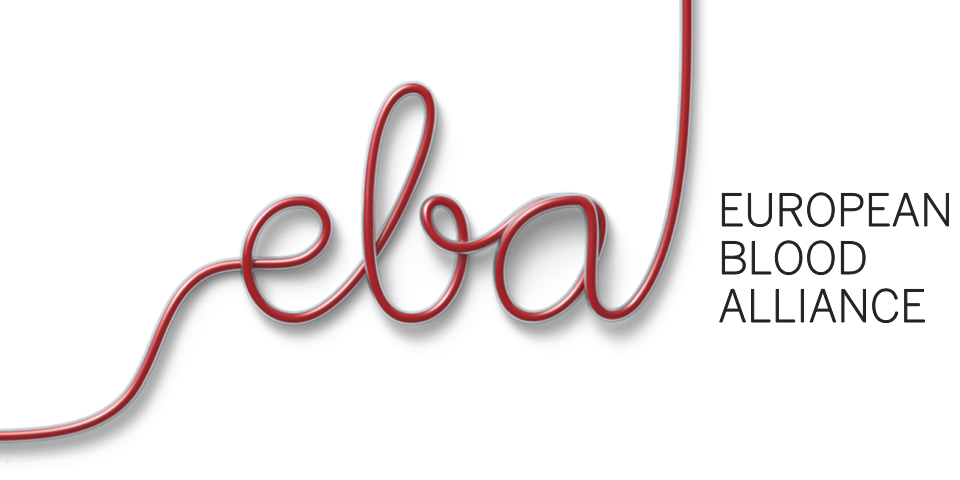November 13, 2016
EBA Fact Sheet on Voluntary Non-Remunerated Blood Donation (October 2016)
Download
Position Paper
Download complete position paper
Summary
Context
The European Commission calls upon Member States to take the necessary measures to encourage Voluntary Non Remunerated Donors (VNRD) (or VUD, Voluntary Unpaid Donation, as called in the Directive). The Directive 2002/98/EC endorses the Council of Europe (1,2) VNRD definition:
Donation is considered voluntary and non-remunerated if the person gives blood, plasma […] of his or her own free will and receives no payment for it, either in the form of cash or in kind which could be considered a substitute for money. This would include time off work other than that reasonably needed for the donation and travel. Small tokens, refreshments and reimbursements of direct travel costs are compatible with voluntary, non-remunerated donation.
But there is variance in how European Member states implement VNRD/VUD (3).
Issues
EBA is a strong supporter of VNRD, both for labile components, for plasma for fractionation and for plasma derived medicinal products, as payment of donors could have negative consequences:
1. Blood safety
Science has shown remunerated blood donors to have a higher risk of blood-borne infectious diseases than voluntary non remunerated donors (4). Until viral inactivation is available for all types of components, collecting components from VNRD will remain a key safety measure besides donor screening.
2. Ethical acceptability for donors
Payment of donors goes against protection of the donor’s dignity, and the prohibition of making the human body and its parts as such a source of financial gain has been strongly encouraged also by the Council of Europe (5) and EU Member States.
3. Sustainable blood supply
The development of commercial plasma collection centres using paid donors erodes the voluntary donor base and might jeopardize the sustainability of the blood supply. In countries where unpaid and paid coexist, blood establishments have increasing difficulties in recruiting and retaining donors after they have been paid for a donation.
What is compensation?
One of the issues that has not been cleared up in legislation and literature is the question what donor compensation is. The Nuffield Council on Bioethics has created a ladder that shows rungs from altruistic donation to paid donation (6) which could assist in defining.
VNRD for Plasma for Fractionation
Because of the large number of complementary safety measures, the safety gain from collecting plasma from voluntary non-remunerated blood donors has been considered of relatively less importance. What remains the same is the ethical responsibility towards the donor and the issue that a donor once paid will not return to the unpaid system. This could destroy the European donation culture based on voluntary unpaid donations.
The EU is not self-sufficient in PfF and PDMP, and increasing demand requires significant import from third countries mostly from paid donors (7). To make sure that there is an optimised supply of PDMPs, all parties in the plasma field agree on the need for using both plasma from apheresis as well as plasma from whole blood donations and on the need to avoid wastage of plasma (8).
EBA recommendations on VNRD in future European Directives
1. Proposed wording for a revised Directive 2002/98/EC: All labile blood components for transfusion shall come from voluntary non-remunerated donors. Member States shall take the necessary measures to ensure that all blood components for transfusion are provided from voluntary and unpaid blood donations.
2. Better define “compensation” for donors of blood, blood components and plasma as a complement to the classical definition of voluntary non-remunerated donation.
1 Directive 2002/98/EC, 2003
2 Council of Europe, Committee of Ministers, Recommendation No. R (95) 14 on the protection of health of donors and recipients in the area of blood transfusion, 1995
3 Comission staff working document on the implementation of the principle of voluntary and unpaid donation for human blood and blood components, SWD(2016) 130 final, 2016
4 Van der Poel CL et al, Vox Sang, 2002; 83: 285–293.
5 European Convention on Human Rights and Biomedicine, 1997 (“Oviedo Convention“).
6. Nuffield Council on Bioethics. Human bodies: donation for medicine and research. 2011.
7 Creativ Ceutical Report, revised by the Commission to include stakeholders’ comments. An EU-wide overview of the market of blood, blood components and plasma derivatives focusing on their availability for patients, 2014.
8 O’Mahony B et al. Vox Sang. 2010; 98: 447-50.
